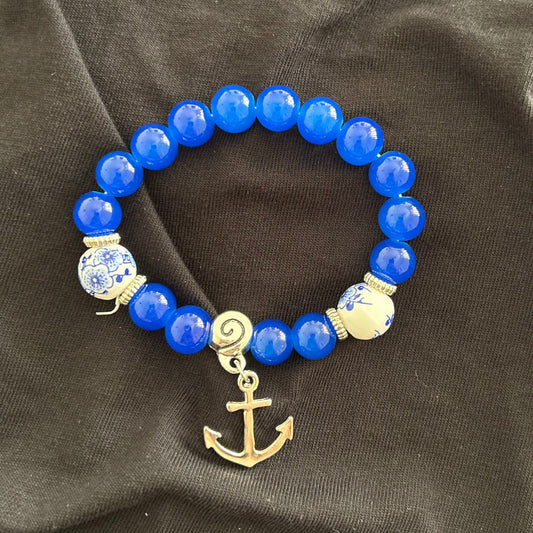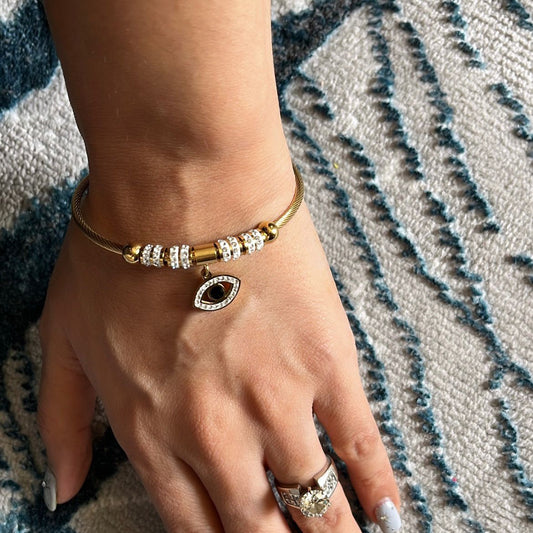Earrings how to make?
Share
Creating earrings can be a rewarding and creative process, allowing you to express your personal style and craftsmanship. While the specific steps may vary depending on the design and materials you choose, here's a general overview of how earrings can be made:
1. **Design Conceptualization:**
Begin by brainstorming ideas for your earrings. Consider factors such as the style, shape, size, and materials you want to use. Sketch out your designs or create digital renderings to visualize your concepts.
2. **Material Selection:**
Choose the materials for your earrings based on your design concept and personal preferences. Common materials for earrings include:
- Metals (e.g., gold, silver, brass)
- Gemstones (e.g., diamonds, pearls, rubies)
- Beads (e.g., glass, crystal, ceramic)
- Wire (e.g., sterling silver wire, copper wire)
- Findings (e.g., ear wires, jump rings, clasps)
3. **Gathering Supplies:**
Once you've decided on your design and materials, gather all the necessary supplies and tools. This may include:
- Jewelry-making tools (e.g., wire cutters, pliers, round-nose pliers)
- Adhesives (e.g., jewelry glue, epoxy resin)
- Measuring tools (e.g., ruler, calipers)
- Work surface (e.g., jewelry-making mat, bead board)
4. **Construction Process:**
Follow these general steps to construct your earrings:
- **Prepare Materials:** Cut, shape, and prepare your materials according to your design specifications. This may involve cutting metal wire, stringing beads, or setting gemstones into settings.
- **Assembly:** Assemble the components of your earrings using appropriate techniques. This may include wire wrapping, soldering, or using findings to connect different elements.
- **Attachment Mechanism:** If your earrings require an attachment mechanism (e.g., ear wires, posts), attach them securely to the completed earring components.
- **Finishing Touches:** Once the construction is complete, add any final embellishments or details to your earrings. This may involve polishing metal surfaces, setting additional stones, or applying a protective coating.
5. **Quality Check:**
Before completing your earrings, perform a thorough quality check to ensure that all components are securely attached and that the earrings meet your standards for craftsmanship and aesthetics.
6. **Final Inspection and Packaging:**
Once your earrings are finished, inspect them one last time to ensure they are free from defects or imperfections. If satisfied, package your earrings appropriately for storage or display, taking care to protect delicate components.
7. **Personalization (Optional):**
If desired, consider personalizing your earrings by adding engraving, stamping, or other custom touches. Personalization can add a unique and meaningful element to your handmade earrings.
8. **Documentation and Record-Keeping:**
Keep detailed records of the materials and techniques used in making your earrings. This will be helpful for future reference, troubleshooting, or replicating designs.
Remember to experiment, have fun, and let your creativity flow as you embark on the journey of making your own earrings. With practice and patience, you can create beautiful and unique earrings that reflect your individual style and craftsmanship.
1. **Design Conceptualization:**
Begin by brainstorming ideas for your earrings. Consider factors such as the style, shape, size, and materials you want to use. Sketch out your designs or create digital renderings to visualize your concepts.
2. **Material Selection:**
Choose the materials for your earrings based on your design concept and personal preferences. Common materials for earrings include:
- Metals (e.g., gold, silver, brass)
- Gemstones (e.g., diamonds, pearls, rubies)
- Beads (e.g., glass, crystal, ceramic)
- Wire (e.g., sterling silver wire, copper wire)
- Findings (e.g., ear wires, jump rings, clasps)
3. **Gathering Supplies:**
Once you've decided on your design and materials, gather all the necessary supplies and tools. This may include:
- Jewelry-making tools (e.g., wire cutters, pliers, round-nose pliers)
- Adhesives (e.g., jewelry glue, epoxy resin)
- Measuring tools (e.g., ruler, calipers)
- Work surface (e.g., jewelry-making mat, bead board)
4. **Construction Process:**
Follow these general steps to construct your earrings:
- **Prepare Materials:** Cut, shape, and prepare your materials according to your design specifications. This may involve cutting metal wire, stringing beads, or setting gemstones into settings.
- **Assembly:** Assemble the components of your earrings using appropriate techniques. This may include wire wrapping, soldering, or using findings to connect different elements.
- **Attachment Mechanism:** If your earrings require an attachment mechanism (e.g., ear wires, posts), attach them securely to the completed earring components.
- **Finishing Touches:** Once the construction is complete, add any final embellishments or details to your earrings. This may involve polishing metal surfaces, setting additional stones, or applying a protective coating.
5. **Quality Check:**
Before completing your earrings, perform a thorough quality check to ensure that all components are securely attached and that the earrings meet your standards for craftsmanship and aesthetics.
6. **Final Inspection and Packaging:**
Once your earrings are finished, inspect them one last time to ensure they are free from defects or imperfections. If satisfied, package your earrings appropriately for storage or display, taking care to protect delicate components.
7. **Personalization (Optional):**
If desired, consider personalizing your earrings by adding engraving, stamping, or other custom touches. Personalization can add a unique and meaningful element to your handmade earrings.
8. **Documentation and Record-Keeping:**
Keep detailed records of the materials and techniques used in making your earrings. This will be helpful for future reference, troubleshooting, or replicating designs.
Remember to experiment, have fun, and let your creativity flow as you embark on the journey of making your own earrings. With practice and patience, you can create beautiful and unique earrings that reflect your individual style and craftsmanship.









